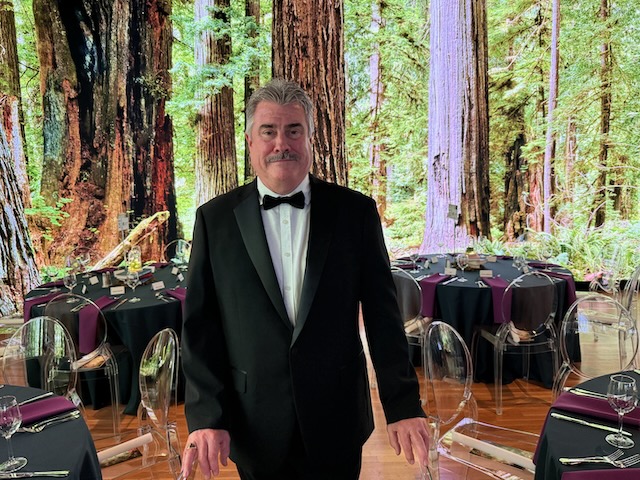A Guide to Producing a Corporate Mini-documentary for Real Human Impact
At Barking Squirrel Media, we believe the most compelling corporate mini-documentary stories are those rooted in authenticity, emotion, and transformation. Producing a corporate mini-documentary is more than just creating a marketing video—it’s a short cinematic film that brings your brand’s values to life by showcasing the real people whose lives have been positively impacted by your company.
This guide outlines the essential steps for producing a successful corporate mini-documentary and the immense value it brings to your brand.
1. Goals & Strategies for Producing a Corporate Mini-documentary
Define your objectives and identify your core audience
Before cameras ever roll, it’s critical to clarify why you’re creating a mini-documentary.
-
What message do you want to convey?
-
What change in perception or emotion do you want to inspire?
-
Who is your primary audience—potential customers, employees, investors, or the broader community?
Defining these goals ensures that every creative and logistical decision is grounded in purpose. It also helps you and your video production partner tailor the film’s tone, structure, and message to resonate deeply with the right audience.
2. Discovery Interviews
Find the authentic story that brings your mission to life
This process involves interviewing several potential candidates—employees, clients, vendors, or community members—who have experienced meaningful transformation through your brand. These conversations are essential for uncovering authentic human stories that align with your mission and resonate with your target audience.
These interviews are also a tool for surfacing narrative gold: conflict, emotion, personal change, and triumph.
3. Discovery Summary
Capture the essence of the story and align it with your brand’s message
After the interview process, synthesize your findings into a concise document that outlines:
-
Key emotional beats in the interviewee’s story
-
How their journey reflects your brand’s core values
-
The challenges they faced and how your organization helped overcome them
This document becomes your story blueprint—ensuring that every scene and soundbite supports your strategic goals while staying true to the protagonist’s journey.
4. The Protagonist in a Corporate Mini-documentary
Choose the face of your brand’s impact
Your protagonist should be someone whose life has been genuinely transformed by your company. This might be:
-
An employee whose career has flourished
-
A customer whose life was improved
-
A vendor whose partnership has deepened
-
A community member affected by your outreach
The best protagonists are those who are emotionally expressive, comfortable on camera, and able to articulate their journey clearly. This individual will carry the heart of your story.
5. Look & Style for Producing a Corporate Mini-documentary
Align story with brand identity and visual representation
Ensure that your protagonist reflects your company’s values and visual identity, especially as they relate to inclusion, culture, and lifestyle. A mini-documentary is not just about what’s said—it’s also about what’s seen. The subject’s demeanor, surroundings, and energy should authentically match your brand’s look and feel.
6. Talking Points
Identify the key messages your film must communicate
Decide what essential ideas the film should convey—brand values, innovations, social impact, culture, or customer care—and map those to your protagonist’s story.
Ask:
-
What themes must the story hit to support your brand?
-
How can the subject’s real-life experiences embody those themes without coming across as scripted?
Your audience should finish the film not only feeling moved but clearly understanding what your brand stands for.
7. Supporting Voices for Producing a Corporate Mini-documentary
Who else needs to speak into this story?
No compelling story is told by a single voice. In classic storytelling, the protagonist is supported by a “guide”—someone who helps them overcome obstacles and realize their potential. In your mini-documentary, that guide may be:
-
A manager, mentor, or leader at your company
-
A family member or colleague
-
A teammate or vendor
These additional voices enrich the narrative, provide credibility, and reinforce the idea that your brand plays an active, caring role in the protagonist’s transformation.
8. Locations & Budget
Map the story to meaningful settings and realistic production costs
Filming typically takes a minimum of three days, covering two locations per day. Locations should reflect the story arc:
-
Where the protagonist works
-
Where their personal growth occurred
-
Where emotional or visual impact is strongest (e.g., home, outdoors, community centers)
A typical filming day starts around $10,000, depending on crew size, equipment, and complexity. This does not include pre-production (planning, scripting, logistics) or post-production (editing, color correction, animation, music licensing). Expect additional costs for travel, location fees, or special gear.
9. Crew Size for Producing a Corporate Mini-documentary
Build the right team to bring your story to life
Crew size varies by project scope, but a professional mini-documentary typically includes:
-
Producer – oversees logistics and budget
-
Director – leads creative vision and narrative flow
-
Director of Photography – controls visual look, lighting, and camera movement
-
Audio Technician – ensures high-quality sound
-
Gaffer – manages lighting setup
-
Grip – handles equipment and scene logistics
Optional but valuable roles include:
-
Art Director
-
Hair & Makeup Artist
-
Second Camera Operator
-
Assistant Camera
Each crew member plays a crucial role in ensuring your story looks and sounds cinematic and professional.
10. Editing & Color Grading
Shape the story and elevate the visual experience
The editing process is where the story truly comes to life. Editors shape the raw footage into a tight, emotional arc that captivates the viewer. This includes:
-
Assembling scenes and interviews into a cohesive narrative
-
Adding music, graphics, and transitions
-
Professional color grading to match brand tone and evoke mood
Color grading enhances emotion, visual consistency, and polish—giving your film that finished, cinematic look.
11. Revisions
Collaborate to refine and finalize
A professional production company will offer a limited number of revision rounds—often two or three. Use this stage to refine tone, clarify messaging, and ensure the final cut aligns with your goals and brand identity.
Final Thoughts: Why It’s Worth Producing a Corporate Mini-documentary
A corporate mini-documentary is a powerful tool that delivers long-term ROI. It:
-
Builds emotional connections with your audience
-
Humanizes your brand
-
Creates evergreen content for web, social, internal use, PR, and recruitment
-
Differentiates you in a crowded market
-
Inspires trust and loyalty
By investing in storytelling that centers real people and real impact, your brand stands to gain not just visibility—but resonance.





